Leonardo's self-propelled chariot - Leonardo Da Vinci
Leonardo's self-propelled chariot - Leonardo Da Vinci
Couldn't load pickup availability
SKU:CNJFYKQ87425H
BUY ONLINE, INSURED TRACEABLE DELIVERY
Unique quality material
Print on handmade paper from Amalfi
Measurement : 29 x 42 cm
Material : work printed on very fine handmade Amalfi paper with fringed edges
Frame : Handmade light brown beech wood
YOU WANT A CUSTOMIZED PRODUCT
OR INFORMATION? WRITE TO US
The work
Self-propelled wagon 1478-80
Metal tip, pen and brush on paper, 27 x 20 cm
Ambrosiana Library, Milan
Let's dive into one of Leonardo da Vinci's first brilliant intuitions, sketched out around 1478: an autonomous chariot, powered by a spring and perhaps intended for the stage rather than the battlefield, dispelling the long-standing belief that it was a prototype of modern automobiles.
In the fifteenth century, majestic public spectacles were the norm for significant events – royal weddings, visits by illustrious personalities, religious holidays. At the same time, the private parties of the elite became increasingly opulent. These productions were often colossal, with complex stage plays that required ingenious machinery to lift and move actors and sets, as well as devices to create stunning effects, such as rapidly lighting a series of lamps.
Creating these shows wasn't just about artistry; it also required technical knowledge. Consequently, renowned artists, skilled in architectural tricks and the use of machines, were favored for these commissions.
Do you remember Filippo Brunelleschi's stage drawings for some sacred representations in Florentine churches in 1439? Iconic.
And Leonardo? He was right in the middle of all this from his early days, creating popular productions, some of which became famous, such as the 'Festa del Paradiso' or the staging of Poliziano's 'Orfeo', where he directed everything from the direction to the scenography and even costumes.
Among these artistic adventures, a well-known youth project by da Vinci from 1478 stands out. Imagine: a self-propelled four-wheeled chariot with a rudder, operated by a spring mechanism – think of a theatrical accessory for stage entrances and exits, not a prototype of car.
The heart of this vehicle, on which Leonardo concentrated, is based on an engine made up of two large leaf springs wound by a pincer device, plus a transmission system made up of a pair of gear wheels that mesh, each with a drum on its axis to engage the pins on the driving wheels.
The drawings don't make clear how the engine and transmission connect or how the power gets to the wheels. But one thing is for sure: the spring system meant loss of power and constant refills. It would take as many as 370 recharges to cover just one kilometer on flat terrain.
Although there are doubts about its practicality or even its ability to move, the design has two indisputably interesting features: a spring-driven motor that stores energy, easing human effort, and a transmission system centered on two gear wheels that turn in directions opposite, similar to a modern differential. These elements are the true strokes of genius of da Vinci's project, which differentiate it from similar studies of his time.
Self-propelled vehicles, used mainly in festivals and shows, but also for military purposes, are part of a long tradition that dates back to antiquity and which finds multiple expressions in late medieval treatises, some concrete, others decidedly imaginative.
While Sienese Francesco di Giorgio's mechanical chariots, cranked by a crew, seem practical enough, Roberto Valturio's wind chariot, with its mill blades hoping to harness wind energy, was decidedly more extravagant.
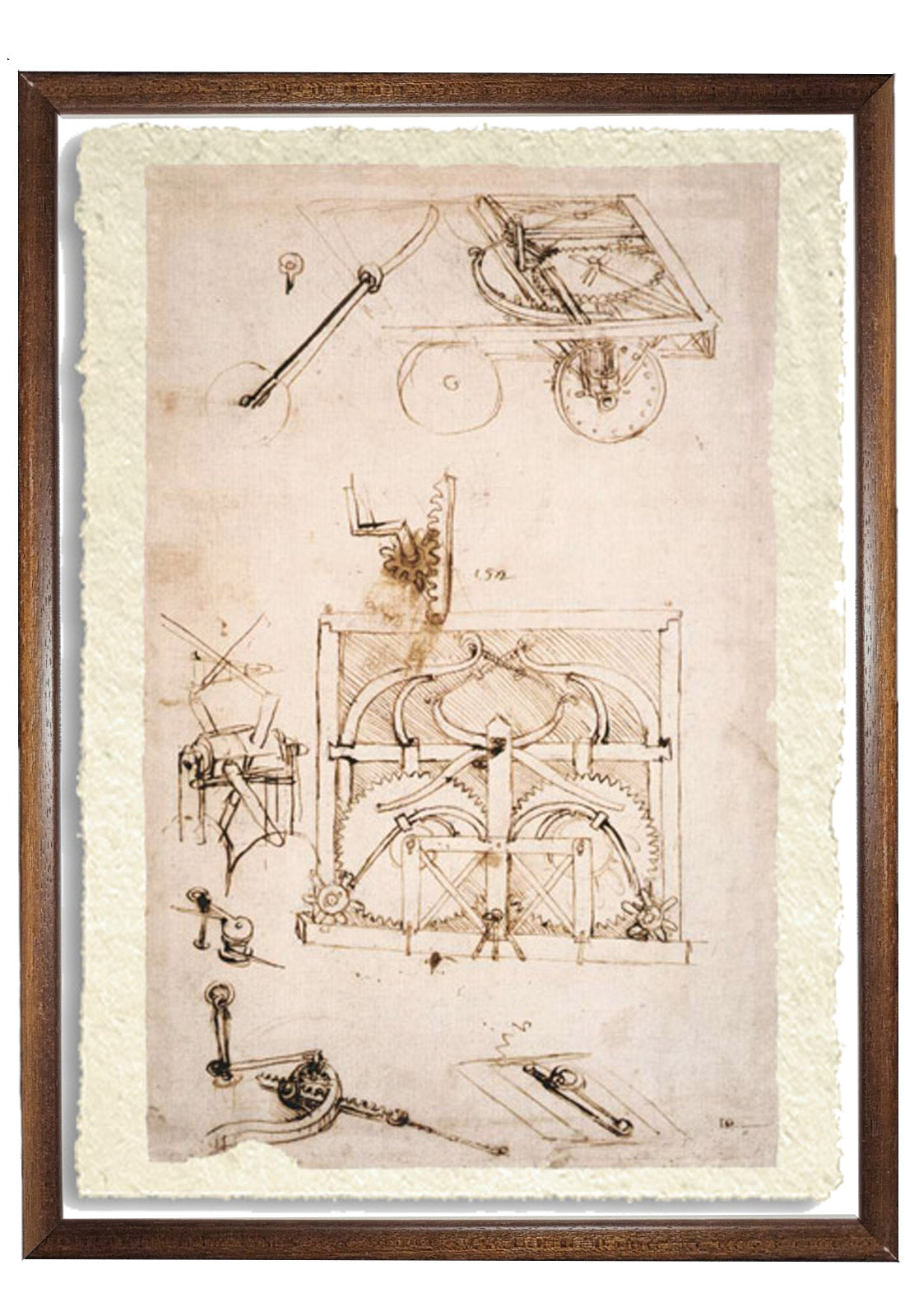
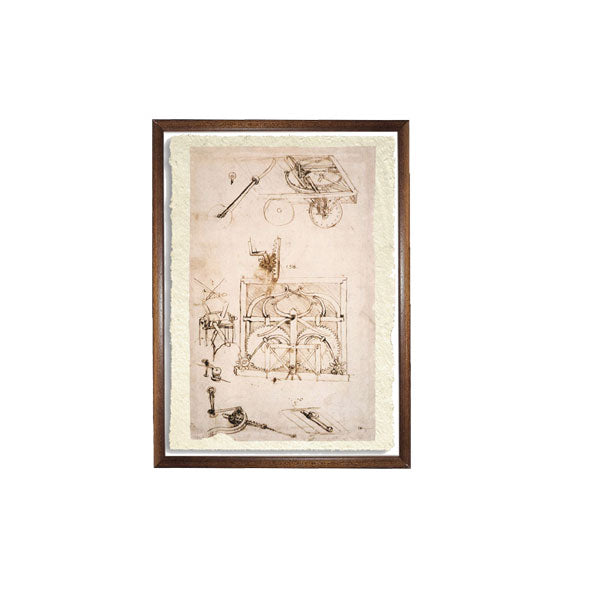
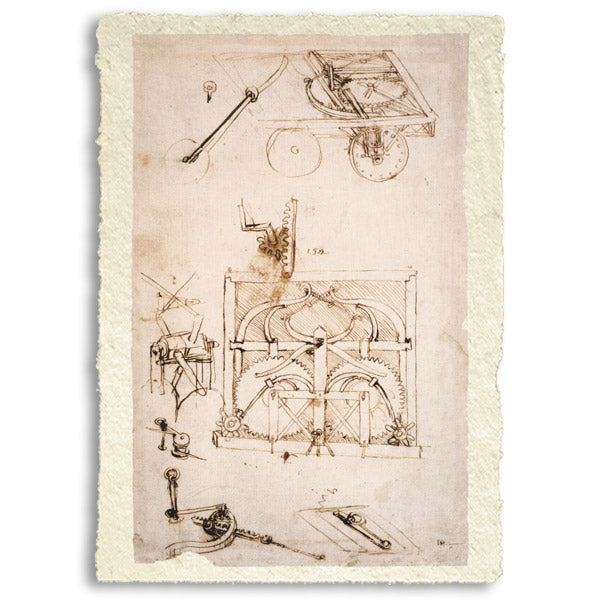
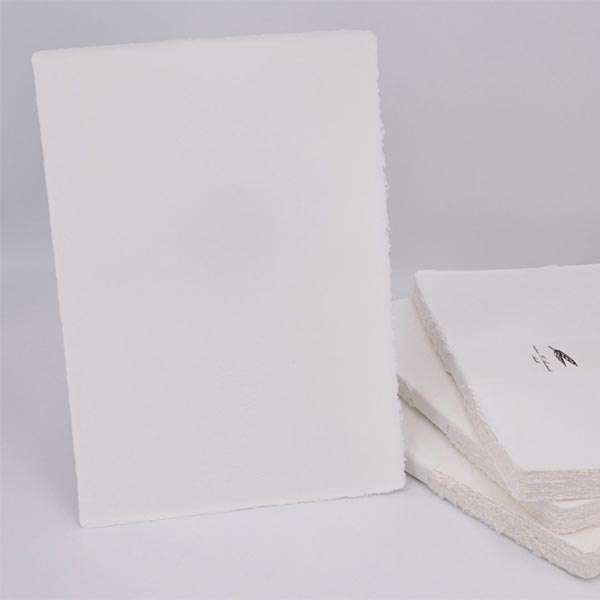
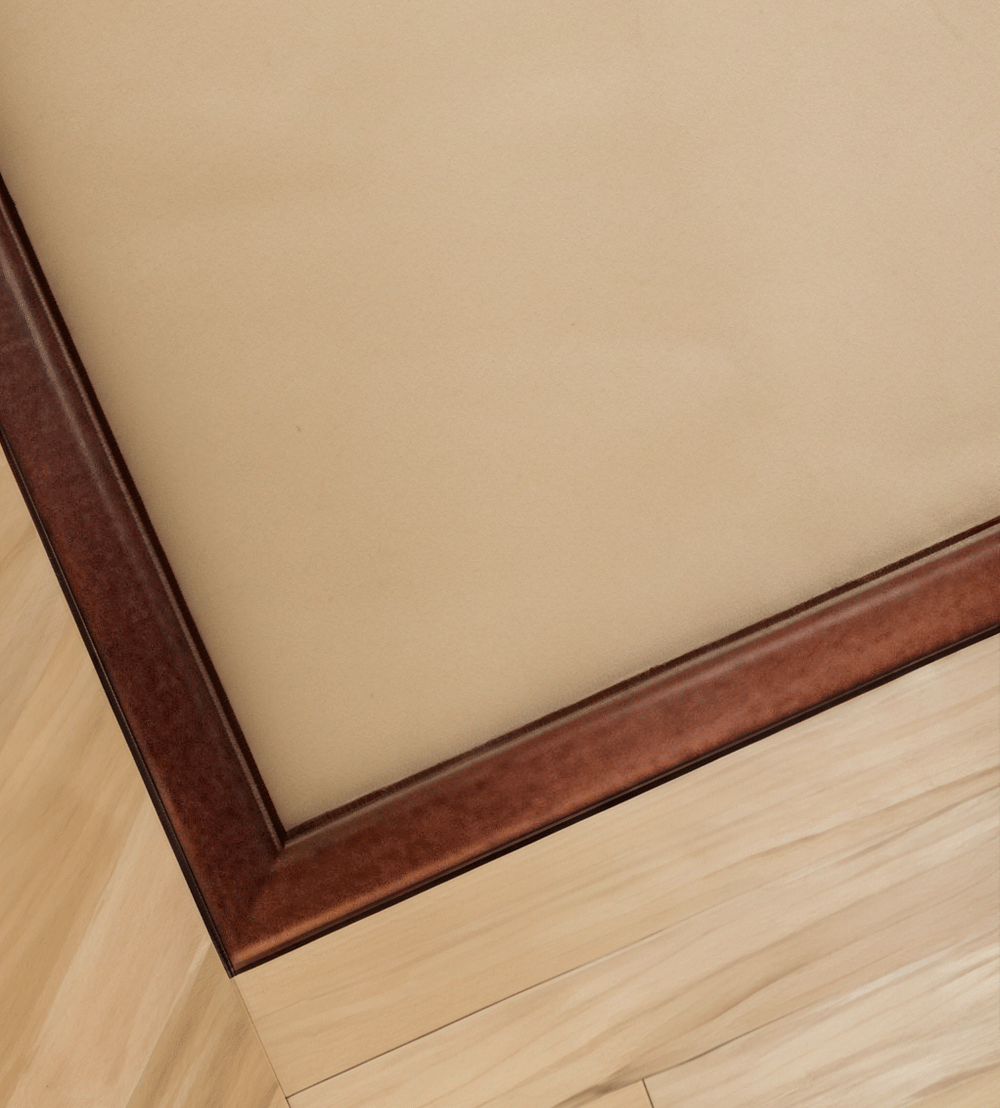
Scopri i pregiati materiali di Trizio Editore
Carta di Amalfi fatta a mano, cornice in legno di faggio e vetro museale. Guarda i particolari dei prodotti che renderanno la tua casa più elegante e preziosa.




